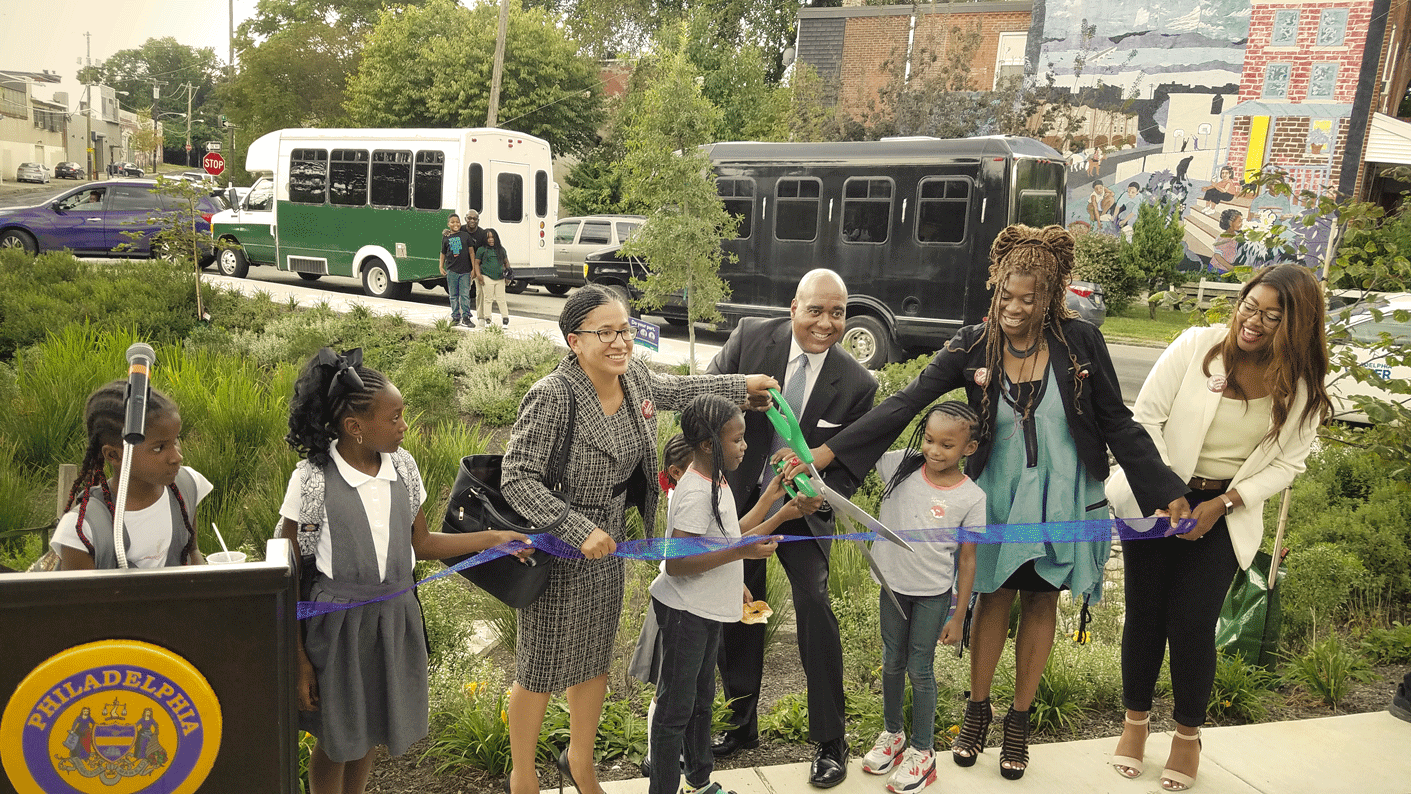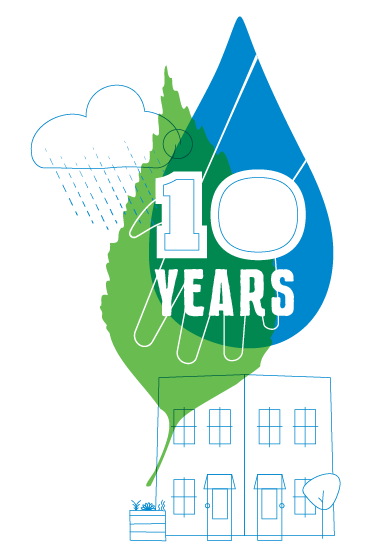 The Green City, Clean Waters approach to managing stormwater with neighborhood-based improvements has been called innovative, ground-breaking, even revolutionary.
The Green City, Clean Waters approach to managing stormwater with neighborhood-based improvements has been called innovative, ground-breaking, even revolutionary.
But what truly makes this initiative one of the nation’s top green programs is its driving priority— serving the people who depend on Philadelphia’s rivers and streams.
As the initiative celebrates its 10-year anniversary, we acknowledge this milestone was made possible by more than 400,000 engaged residents who’ve inspired our work over the past decade.
In 2011, the City of Philadelphia officially embarked on Green City, Clean Waters, a 25-year plan to transform the health of our local waterways and meet state and federal water quality standards under the Clean Water Act. The strategy involved implementing neighborhood-based green stormwater infrastructure while also upgrading traditional infrastructure, such as treatment plants.
The goal: reducing the No. 1 local pollution source by 85 percent by 2036.
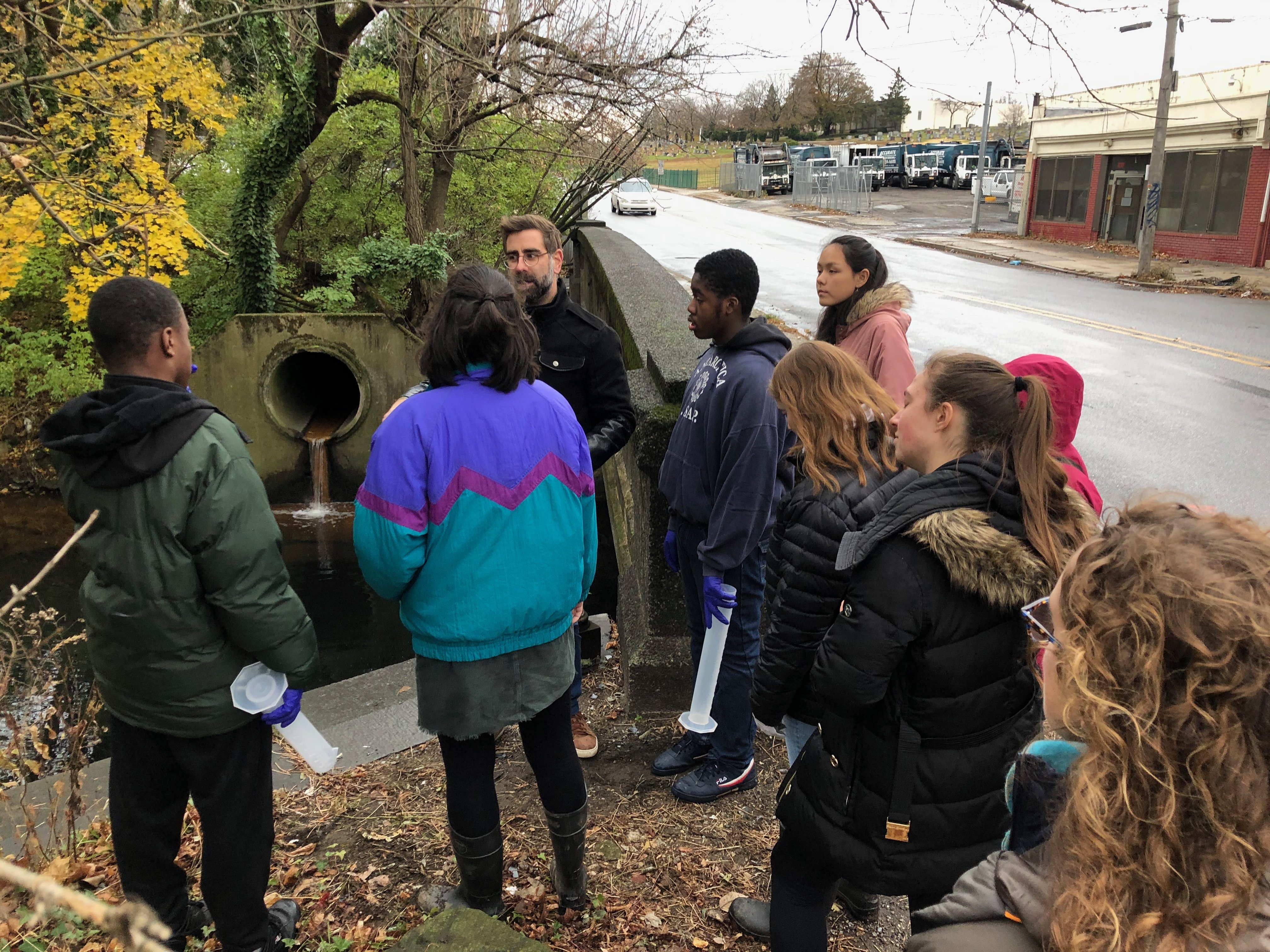
West Philadelphia outreach specialist Dan Schupsky gives a tour of a combined sewer overflow on Cobbs Creek.
As we approached the drawing board more than a decade ago, we thought: How could we clean up local waterways while genuinely engaging our communities, too?
“The advent of Green City, Clean Waters presented us with an opportunity to change the way we interacted with our residents,” says Glen Abrams, Deputy Commissioner of Communications and Engagement. “Most green stormwater infrastructure systems are much more visible compared to traditional underground infrastructure. We wanted to make sure that people understood the need for this new type of infrastructure and had a voice in how the systems were planned and designed.”
Green City, Clean Waters was an innovative way to reduce water pollution while generating secondary environmental, economic, and social benefits for all Philadelphia residents. Within this collective push for a greener city with cleaner waters, we wanted to create a plan-of-action for empowering communities with knowledge and resources to maintain a sustainable city.
As it turns out, the subject is important to Philadelphians.
Nearly half of customer survey respondents over the last few years ranked cleaning waterways as the second most critical issue that the Water Department should address. Only safe drinking water topped that priority.
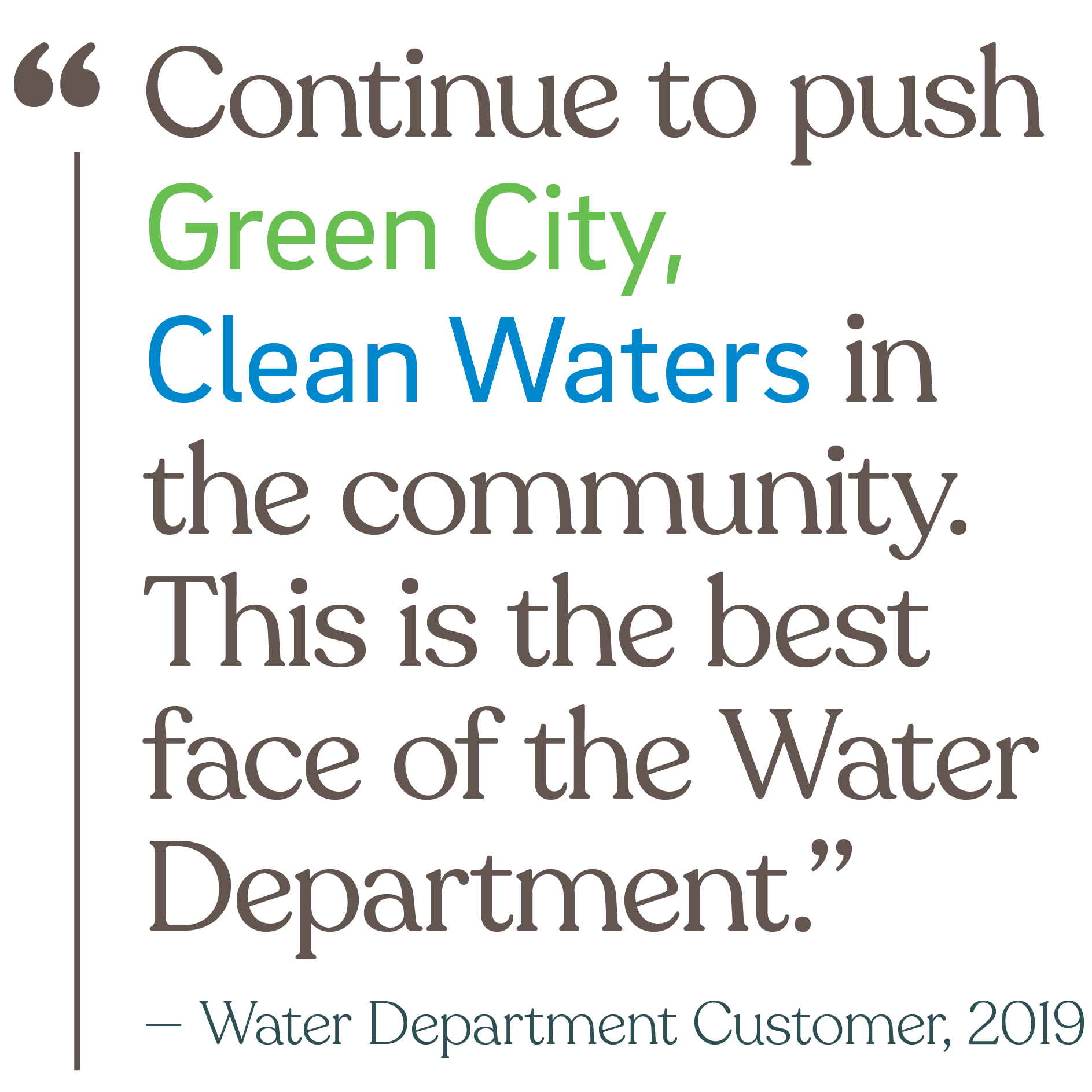
“Philadelphians want to contribute to the solution,” says Tiffany Ledesma, Public Engagement Team manager. “They want to do their part to improve their local communities and their city’s waterways—for their children and the next generation.”
Philadelphia should be proud of what the city is set to achieve in the first decade of Green City, Clean Waters.
While green infrastructure that will be reflected in our 10-year milestone report is still being built, here are some highlights as of June 2020:

- Nearly 800 green infrastructure sites in dozens of neighborhoods
- More than 2,800 individual green tools
- More than 1,800 Greened Acres, each one soaking up a SEPTA bus-sized (+27,000-gallon) load of polluted runoff during a one-inch storm (as of March 2021.)
All of that adds up to a 2.7 billion gallon reduction in annual combined sewer overflows, representing an approximately 21 percent improvement from where we were in 2011.
But our most gratifying undertaking has been partnering with residents—block captains, business owners, teachers, students, artists, and many more individuals who comprise the fabric of the City of Brotherly Love and Sisterly Affection.
“For me, the community keeps all of our efforts very honest and transparent,” says West Philadelphia outreach specialist Dan Schupsky. “They hold us to a high standard, and they’re our ratepayers. We need to use their money wisely. When we’re building infrastructure that’s visible and tangible in their community, we need to make sure that they are informed, that we know when they like something or don’t like something, and how to make appropriate changes. All of the city agencies work for the people.”
Green City Clean Waters: Celebrating 10 Years of Success from Philadelphia Water Department on Vimeo.
Over the past decade, we’ve gathered numerous experiences but none more valuable than this lesson: our work is enriched by empowering voices, building relationships, and establishing trust in communities.
“We wouldn’t have reached our 10-year milestone without the support of the communities impacted by the infrastructure,” Ledesma says. “When rain gardens, stormwater bumpouts, and stormwater trees are planted outside of one’s home, business or rec center, the voice of the local resident is of utmost importance—not only in the planning and design process but during construction and maintenance too.”
Emphasis on Engagement + Education
During the early phases of Green City, Clean Waters, we knew that public participation would be critical. Prior to 2011, customers started submitting petitions to the Water Department for green infrastructure to be installed on their residential blocks. After witnessing a demand for these neighborhood-based tools, we realized that Philadelphians were up for the ride.
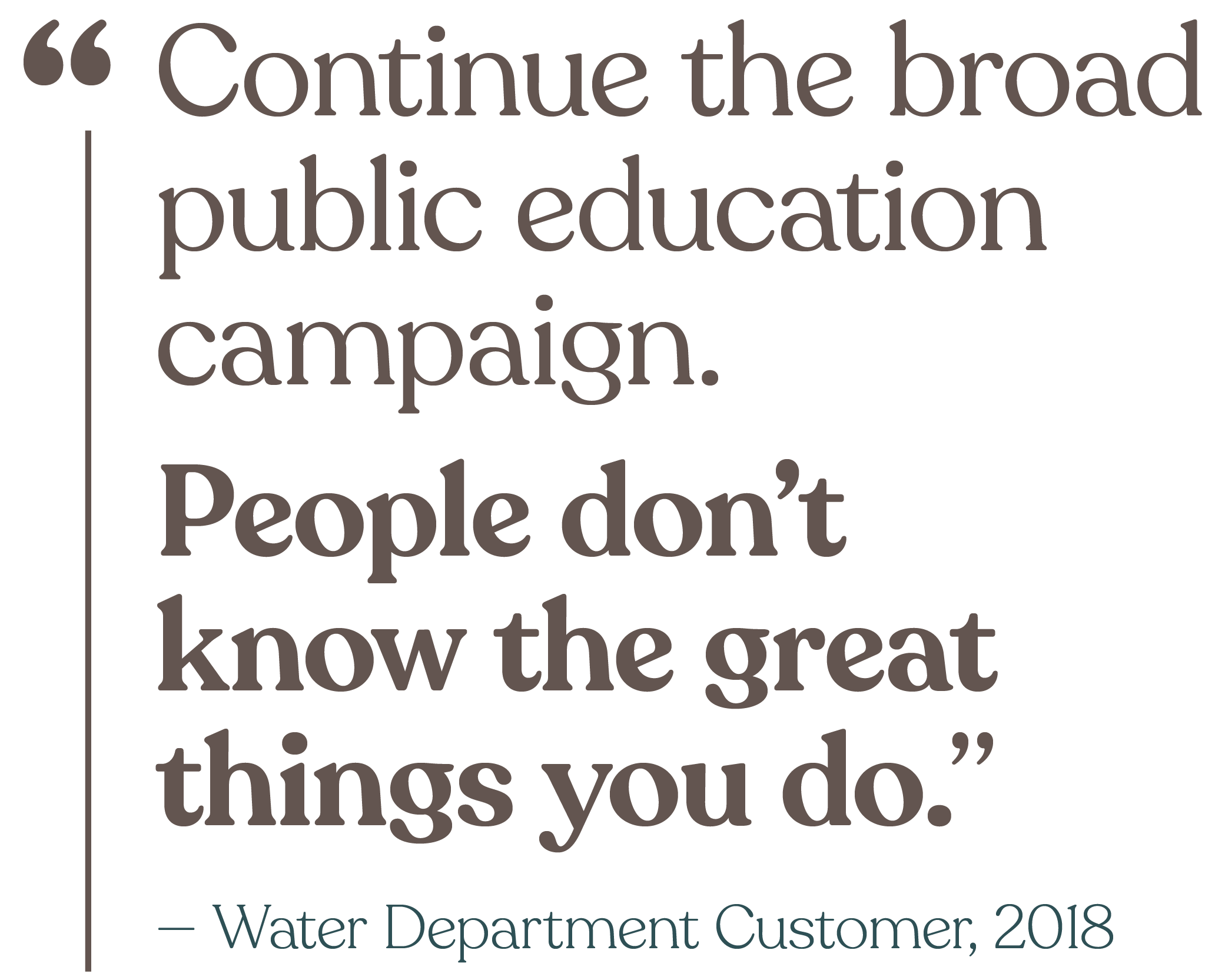
From public art in the form of hot pink yarn wrapped around stormwater trees to a Cobbs Creek oral history project told by residents, we piloted and tested multiple methods of outreach, engagement, and communications.
In these first few years, we also formed some of our signature initiatives:
- Stormwater tours
- An interpretive green tools signage system
- A popular residential stormwater incentives program (Rain Check) with the Pennsylvania Horticultural Society (PHS)
- Opportunities for community members to get paid to help maintain the beauty of local green infrastructure (Soak It Up Adoption)
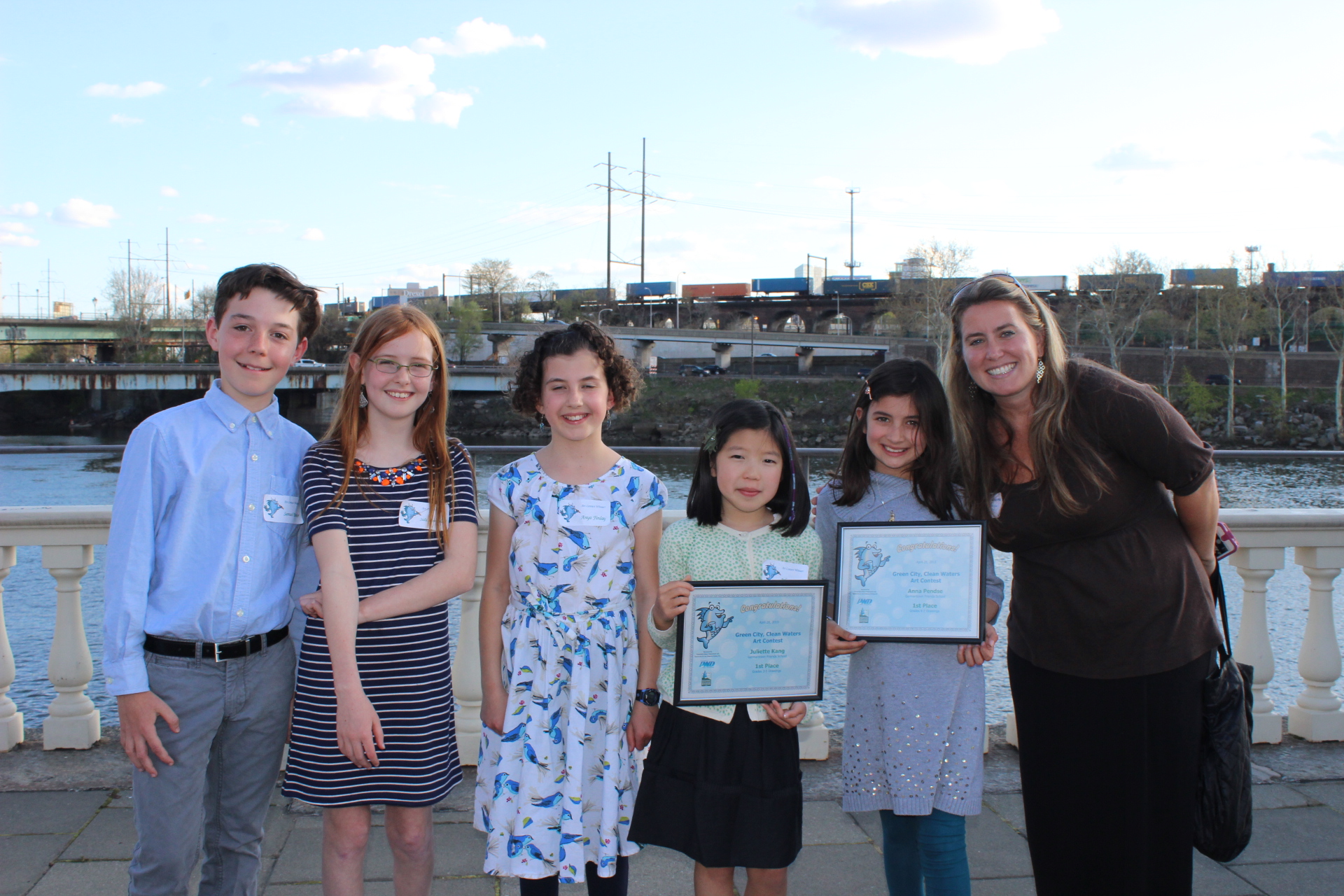
Public Engagement Team manager Tiffany Ledesma with winners of the 2015 Green City, Clean Waters Art Contest for Philadelphia’s K-12 students.
Through the Fairmount Water Works Interpretive Center, we also collaborated with the School District of Philadelphia teachers and administrators to develop the Understanding the Urban Watershed curriculum. The resource educates and engages middle school students on topics such as drinking water, wastewater, and stormwater. Educators from Philadelphia Parks & Recreation also led green stormwater infrastructure lessons at recreation centers and at parks throughout the city.
In our central approach to outreach, our Public Engagement team attends community meetings to inform and update residents about green infrastructure planned for their neighborhood—and we’ve continued this practice for the past decade.
Although we have obligations to notify neighborhoods about new infrastructure, sending a letter doesn’t fully deliver our message—and would not necessarily inspire local green champions, either.
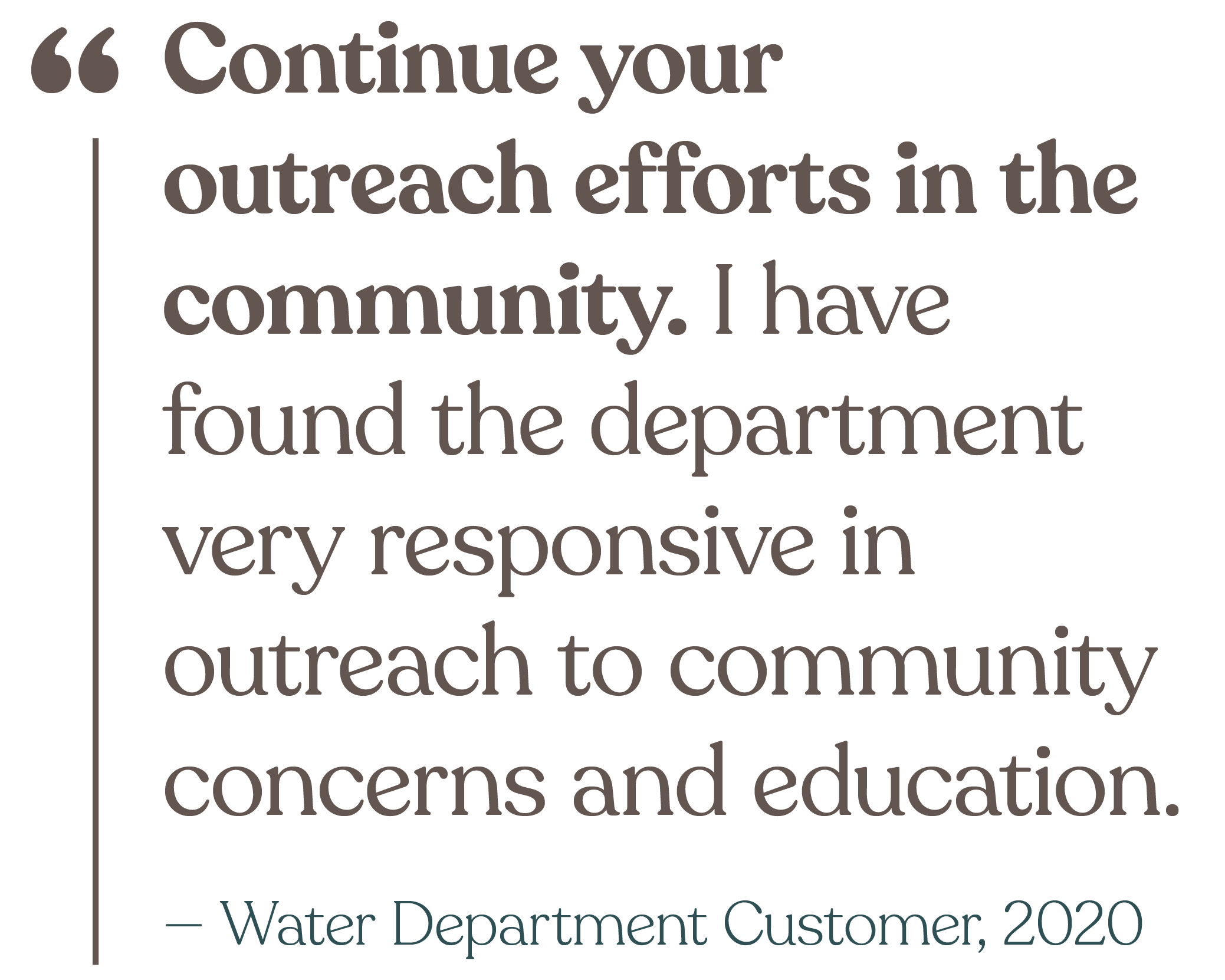
Notification implies a one-way dialogue. So, our team aims to actively connect with impacted community members. We want to listen, record feedback, and consider residents’ priorities, such as littering, crime, and traffic when discussing projects to reduce conflicts well before construction. (We share other resources, too, that may help with top-of-mind concerns, such as customer assistance programs for those struggling to pay their water bill.)
The engagement process is akin to an environmental education lesson.
“Our jobs are to bridge the gap between what these projects are and why people should embrace them,” says Northeast and Northwest Philadelphia outreach specialist Hailey Stern. “The Water Department really wants to get the public’s support, because it affects people’s daily lives so intimately. The department invests in education and engagement out of respect for the people who are going to be surrounded by Green City, Clean Waters projects for a long time.”
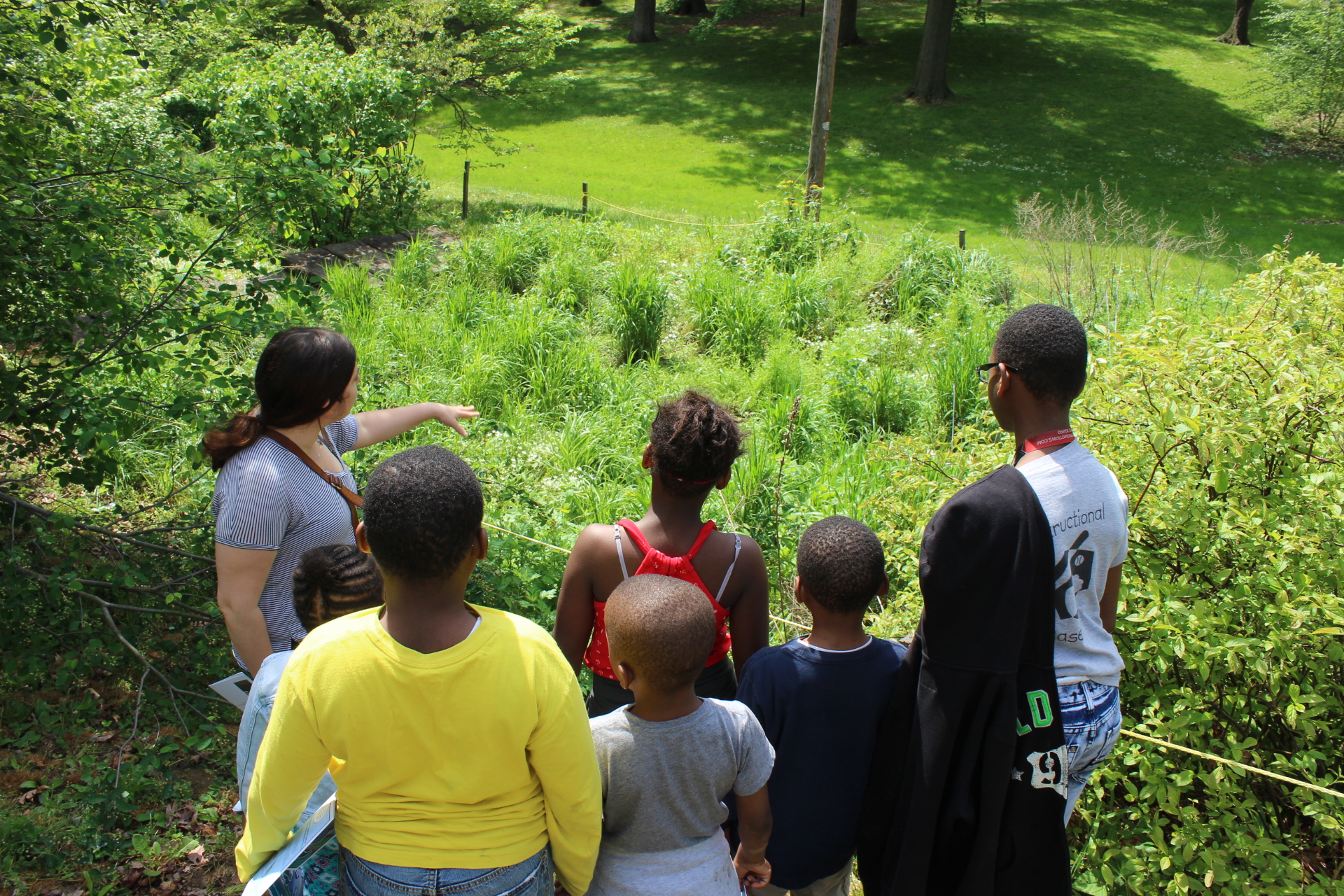
Northwest and Northeast Philadelphia outreach specialist Hailey Stern shows students green stormwater infrastructure at Cliveden Park.
The standard engagement meeting looks like a crash-course on the history of Philadelphia’s early environment, its centuries-old sewer systems, and its current problem surrounding combined sewer overflows. By educating residents and giving context to this issue, attendees can connect the dots on how and why green stormwater infrastructure is beneficial for their neighborhood, the city and our local waterways.
“There’s a reason why we have presentations and tell the story of the rivers,” says North Philadelphia outreach specialist Maura Jarvis. “It’s a much larger narrative, so people can have a comprehensive understanding rather than discussing one isolated project. We’re helping with a holistic understanding of how residents, urban infrastructure, and environment come together.”
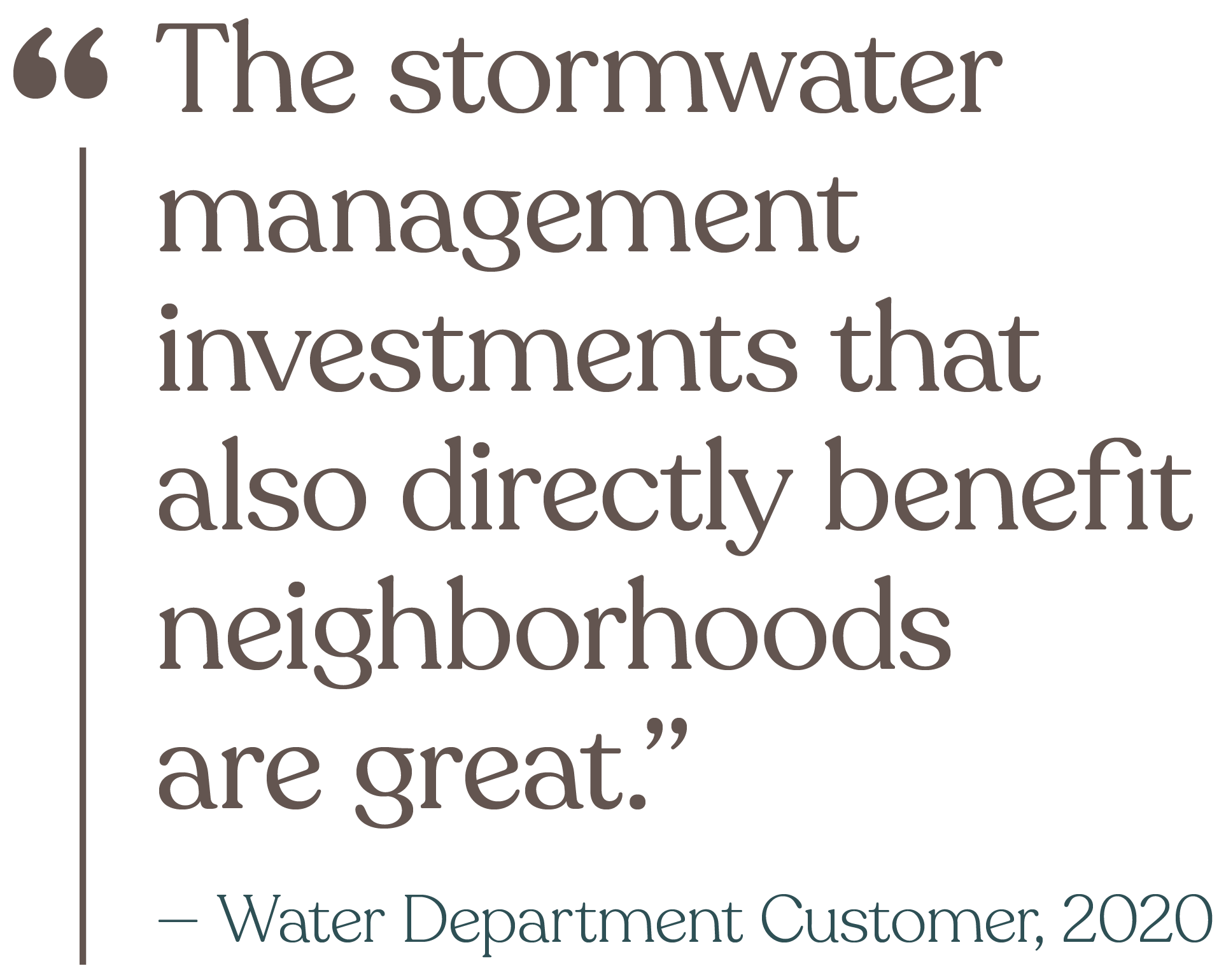
Our planners and designers broke down the city into four districts based on combined sewer overflow areas. An outreach specialist is assigned to each district. Through regular community engagement, they strive to make authentic relationships with as many residents while explaining how, why, where, and when new green tools will be installed in their neighborhood.
Communication is also a cornerstone of Green City, Clean Waters. From social media to language translation support, we seek to reach impacted residents with clear, compelling, and accurate information. We’re also working to expand online tools, such as hosting more virtual community meetings in light of the COVID-19 pandemic. Recognizing that a digital divide exists, we are committed to maintaining traditional methods of communications, such as phone calls and flyering, to ensure no resident is left behind.
Thank You(s), Wooder Champions!
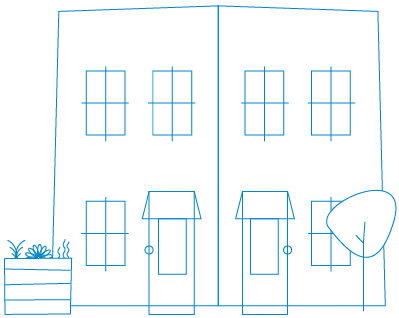
From installing nearly 6,500 residential rain barrels to engaging more than 5,000 individuals to maintain community green projects, we were able to go above and beyond regulatory requirements because of you!
Through equitable outreach and engagement, Green City, Clean Waters continues to serve as a national pioneer. We’re dedicated to addressing water pollution while unifying communities around green projects.
“We work hard every day to engage and educate people throughout Philadelphia,” says Abrams. “Because we know that our efforts help transform our neighborhood residents into advocates for cleaning water and a greener city.”

Follow 10-year content on our blog + social media.
Thanks to you, there are many more stories to tell! Join us over the next several months as we reflect on 10 years of Green City, Clean Waters and celebrate the folks who helped make this all possible.
